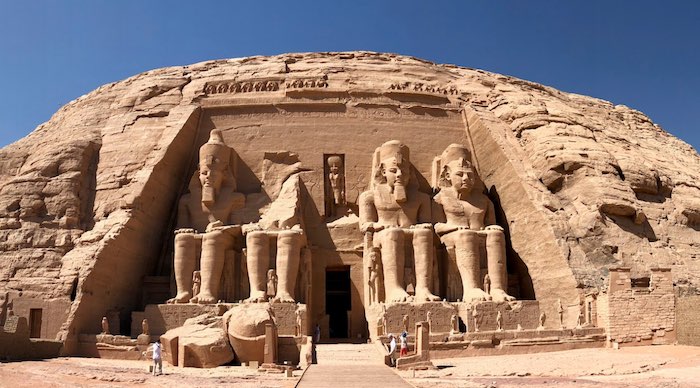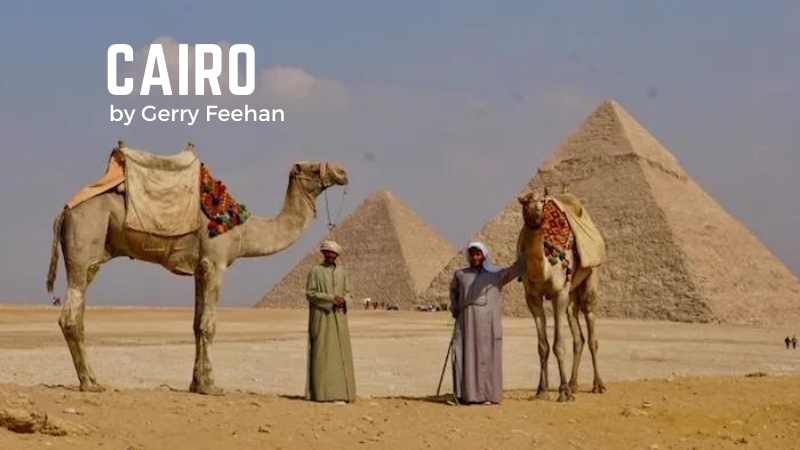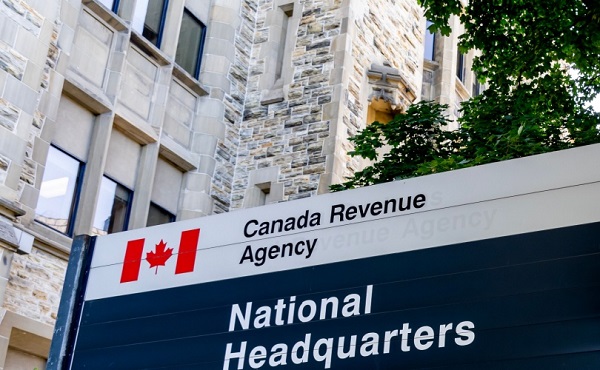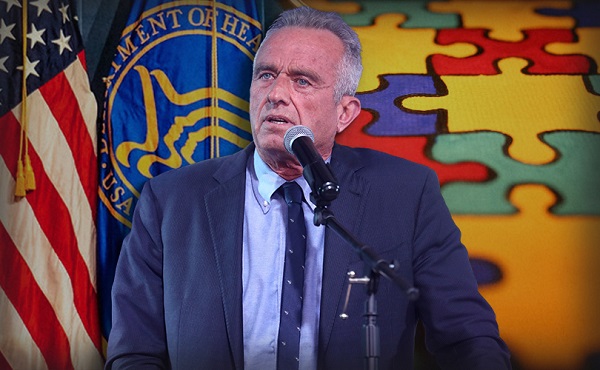Gerry Feehan
“Can you tell me if there’s a good spot to fish around here?”

Fly Fishing Alberta
I remember the first time I played golf. It was a beautiful summer evening. That first shot flew out over the blue Edmonton sky and settled in the middle of the fairway. I was 12 years old and, from that moment on, addicted to golf. My appetite for fly fishing began many years later, but was also sparked by a single, memorable event – when, in a classic example of beginner’s luck, I landed a big brown trout on the Bow River.
Over the last decade I’ve wasted a glorious allotment of life’s brief flicker engaged in this new, perplexing pastime. Fly-fishing, like golf, is a pursuit that involves a litany of painful moments on the steep road toward competency. Unlike golf however, fishing does not entail the agony of a triple-bogey or the humiliation of a whiff. But, like the errant swing of a driver, casting a fly can result in plenty of frustration and some unintended consequences. There are missed fish, tangled lines – even an occasional need for the apologetic retrieval of a barbed hook from the derrière of a fellow fisherman.
There are a few different ways to wet a line. If you have a boat, you can drift a river or float a lake. If not, you can stand on a dock or cast from shore. But best of all is to walk and wade a shallow river. Nothing beats the solitary experience of crisscrossing a remote meandering creek, searching for elusive, rising fish. Plus I get to spend long peaceful hours alone with my favourite person. Haha.
Fly fishermen are notoriously secretive about their favourite fishing spots. One fall evening, at a secluded spot on the Oldman River in southern Alberta, I arrived late and, in the near-dark, set up camp. I wandered over to chat with a couple of well-fed fellows who were sitting contentedly by a campfire, cooking smokies and enjoying a few brews. A pair of hip-waders drying in the setting sun identified them as fly-fishermen.
‘Hi there,’ I said. ‘Can you tell me if there’s a good spot to fish around here?’ ‘
Yup,’ said the more portly of the two, taking a pull from his beer and looking downstream. ‘Just that way a bit. It’s called Zippermouth Creek.’
‘Where?’ I asked excitedly.
He looked at his buddy knowingly, then turning my way, pulled a thumb and index finger across his lips. Then he laughed, took another sip and returned his attention to the roaring fire. I slunk away – rebuffed but undeterred. And in the morning I did indeed hunt down a nice fishing hole. And since then I’ve discovered a few Zippermouth Creeks of my own.

That’s Tony’s fly stuck in the brown’s tail. Honest!
Like every other endeavour, people who are skilled at fly-fishing make it look easy. A lot of time can be saved – and aggravation averted – by watching and imitating the pros. Turns out there are just three parts to the program. First, one must learn to operate a fly rod. Then, you need to figure out where the fish are hiding. Last is to determine what our pesce little friends are eating that day. My buddy Tony has patiently – and somewhat effectively – educated me in these three basic principles. But on occasion, even the master gets fish-schooled. We were drifting the Red Deer River on May 15th, opening day.
Tony was at the oars, scanning the surface, vigilant for signs of rising trout. Suddenly he pointed quietly toward a sunken log: ‘There, a big brown!’ He eased the boat toward shore and silently dropped anchor. Soon the telltale signs of a slurping snout re-emerged. Tony ambled onto the bank, tied on a green drake and, with precision, dropped the fly a few feet upstream of the log. The drift was textbook, directly over where the trout had been feeding. Nothing. Puzzled, he tied on a stonefly pattern and made another perfect cast. Nada. Finally he tried a caddis. Sure enough, the fish struck. But it was foul hooked and easily busted off. Tony, frustrated, gave up and, muttering about ‘dumb fish’, wandered up toward another hole.
I looked in my fly box, pulled out something that looked like a beetle, and tied it on. First cast the monster attacked. I set the hook and, to my utter amazement, the fly was firmly attached to the maw of an enormous brown. I reeled in the line but when the fish saw me – and I it – we both panicked. It set course for the middle of the river and the safety of strong current while I stumbled and fell on the slippery rocks. I regained my footing and after five minutes fighting the brute I called for help: ‘Tony, bring the net!’ But the cascading river drowned out my wails. I’d have to land the beast solo. Which, amazingly, I did, although the fish’s mouth and tail were spilling out the edges of my cheap net. Tony arrived in time to snap a picture, verifying what otherwise would have gone down in history as just another of Gerry’s fictional fish stories.
Do I tie my own flies? Certainly not. I get everything from my dealer, Tony. It starts with a phone call:
G: ‘Hey, Tony, I’m outa green drakes and I need some, real bad.’
T: ‘I ain’t got no green drakes, I can get ya some browns. Maybe.’
G: ‘No, Tony, please I really need the greens.’
T: ‘Ok, ok, calm down. I’ll leave a packet in the rear mailbox. Leave cash. Use the back gate and don’t let nobody see ya.’
G: ‘Thanks Tony, you’re a life saver.’
Then the conversation changes:
G: ‘Oh, Tony, did I mention the big cutthroat I landed at Prairie Creek last week.’
T: ‘No, Gerry. Tell me more. Was it male, female? Any colour?’
G: ‘Golden red. A fat male. 18 inches. Maybe more. With a huge kype.’
T: ‘Oh, Gerry, that is so-o-o exciting! Tell me more.’
I call this 1 (900) FISH TALK. It’s kinda weird. But then, fly fishermen really are fanatical.
These days I spend about as much time casting about as I do strolling fairways – and if I have the choice between fishing and golfing, more and more I’m leaning toward avoiding those nasty three-putts and instead trying to land that big one.
By the way, did I mention that, after hitting that first big drive all those years ago, I duffed three shots in a row?
contact Gerry at [email protected]

Gerry Feehan is an award-winning travel writer and photographer. We hope you enjoyed his Irish adventure. He and his wife Florence live in Red Deer, AB and Kimberley, BC.
Thanks to Kennedy Wealth Management for sponsoring this series. Click on their ads and learn more about this long-term local business.
We will travel again but in the meantime, enjoy Gerry’s ‘Buddy Trip to Ireland’
Gerry Feehan
Abu Simbel

Abu Simbel is a marvel of ancient and modern engineering
I love looking out the window of an airplane at the earth far below, seeing where coast meets water or observing the eroded remains of some ancient formation in the changing light. Alas, the grimy desert sand hadn’t been cleaned from the windows of our EgyptAir jet, so we couldn’t see a thing as we flew over Lake Nasser en route to Abu Simbel. I was hopeful that this lack of attention to detail would not extend to other minor maintenance items, such as ensuring the cabin was pressurized or the fuel tank full.
We had just spent a week on a dahabiya sailboat cruising the Nile River, and after disembarking at Aswan, were headed further south to see one of Egypt’s great
monuments. There are a couple of ways to get to Abu Simbel from Aswan. You can ride a bus for 4 hours through the scorched Sahara Desert, or you can take a plane for the short 45-minute flight.
Opaque windows notwithstanding, I was glad we had chosen travel by air. Abu Simbel is spectacular, but there’s really not much to see except the monument itself and a small adjacent museum. So most tourists, us included, make the return trip in a day. And fortunately we had Sayed Mansour, an Egyptologist, on board. Sayed was there to explain all and clear our pained expressions.
Although it was early November, the intense Nubian sun was almost directly overhead, so Sayed led us to a quiet, shady spot where he began our introduction to
Egyptian history. Abu Simbel is a marvel of engineering — both modern and ancient. The temples were constructed during the reign of Ramses II. Carved from solid rock in a sandstone cliff overlooking the mighty river, these massive twin temples stood sentinel at a menacing bend in the Nile — and served as an intimidating obstacle to would-be invaders — for over 3000 years. But eventually Abu Simbel fell into disuse and succumbed to the inevitable, unrelenting Sahara. The site was nearly swallowed by sand when it was “rediscovered” by European adventurers in the early 19 th century. After years of excavation and restoration, the monuments resumed their original glory.
Then, in the 1960’s, Egyptian president Abdel Nasser decided to construct a new “High Dam” at Aswan. Doing so would create the largest man-made lake in the
world, 5250 sq km of backed-up Nile River. This ambitious project would bring economic benefit to parched Egypt, control the unpredictable annual Nile flood and also supply hydroelectric power to a poor, under-developed country. With the dam, the lights would go on in most Egyptian villages for the first time. But there were also a couple of drawbacks, which were conveniently swept under the water carpet by the government. The new reservoir would displace the local Nubian population whose forbearers had farmed the fertile banks of the Nile River for millennia. And many of Egypt’s greatest monuments and tombs would be forever submerged beneath the deep new basin — Abu Simbel included. But the government proceeded with the dam, monuments be damned.
Only after the water began to rise did an international team of archaeologists, scientists — and an army of labourers — begin the process of preserving these
colossal wonders. In an urgent race against the rising tide, the temples of Abu Simbel were surgically sliced into gigantic pieces, transported up the bank to safety and reassembled. The process was remarkable, a feat of engineering genius. And today the twin edifices, honouring Ramses and his wife Nefertari remain, gigantic, imperious and intact. But instead of overlooking a daunting corner of the Nile, this UNESCO World Heritage site now stands guard over a vast shimmering lake.
Sayed led us into the courtyard from our shady refuge and pointed to the four giant Colossi that decorate the exterior façade of the main temple. These statues of
Ramses were sculpted directly from Nile bedrock and sat stonily observing the river for 33 centuries. It was brutally hot under the direct sun. I was grateful for the new hat I had just acquired from a gullible street merchant. Poor fellow didn’t know what hit him. He started out demanding $40, but after a prolonged and brilliant negotiating session, I closed the deal for a trifling $36. It was difficult to hold back a grin as I sauntered away sporting my new fedora — although the thing did fall apart a couple of days later.
Sayed walked us toward the sacred heart of the shrine and lowered his voice. Like all Egyptians, Sayed’s native tongue is Arabic. But, oddly, his otherwise perfect English betrayed a slight cockney accent. (Sayed later disclosed that he had spent a couple of years working in an East London parts factory.) He showed us how the great hypostyle hall of the temple’s interior is supported by eight enormous pillars honouring Osiris, god of the underworld.

Exploring the inner temple

Nefertari
Sayed then left us to our devices. There were no other tourists. We had this incredible place to ourselves. In the dim light, we scampered amongst the sculptures
and sarcophagi, wandering, hiding and giggling as we explored the interior and its side chambers. At the far end lay the “the holiest of holies” a room whose walls were adorned with ornate carvings honouring the great Pharaoh’s victories — and offering tribute to the gods that made Ramses’ triumphs possible.
Exterior photographs of Abu Simbel are permitted, but pictures from within the sanctuary are verboten — a rule strictly enforced by the vigilant temple guardians — unless you offer a little baksheesh… in which case you can snap away to your heart’s content. Palms suitably greased, the caretakers are happy to pose with you in front of a hidden hieroglyph or a forbidden frieze, notwithstanding the stern glare of Ramses looking down from above.

A little baksheesh is key to holding the key
After our brief few hours at Abu Simbel, we hopped back on the plane. The panes weren’t any clearer but, acknowledging that there really wasn’t much to see in the Sahara — and that dirty airplane windows are not really a bona fide safety concern — I took time on the short flight to relax and bone up on Ramses the Great, whose mummified body awaited us at the Egyptian Museum in Cairo.
Exodus Travel skilfully handled every detail of our Egypt adventure: www.exodustravels.com/
Gerry Feehan is an award-winning travel writer and photographer. He lives in Kimberley, BC.

Thanks to Kennedy Wealth Management for sponsoring this series. Click on the ads and learn more about this long-term local business.
Gerry Feehan
Cairo – Al-Qahirah

The Pyramids of Giza
The first thing one notices upon arrival in Egypt is the intense level of security. I was screened once, scanned twice and patted down thrice between the time we landed at the airport and when we finally stepped out into the muggy Cairo evening. At our hotel the scrutiny continued with one last investigation of our luggage in the lobby. Although Egyptian security is abundant in quantity, the quality is questionable. The airport x-ray fellow, examining the egg shaker in my ukulele case, sternly demanded, “This, this, open this.” When I innocently shook the little plastic thing to demonstrate its impermeability he recoiled in horror, but then observed it with fascination and called over his supervisor. Thus began an animated, impromptu percussion session. As for the ukulele, it was confiscated at hotel check-in and imprisoned in the coat check for the duration of our Cairo stay. The reasons proffered for the seizure of this innocuous little instrument ranged from “safety purposes” to “forbidden entertainment”. When, after a very long day, we finally collapsed exhausted into bed, I was shaken — but did not stir.
Al-Qahirah has 20 million inhabitants, all squeezed into a thin green strip along the Nile River. Fading infrastructure and an exponential growth in vehicles have contributed to its well-deserved reputation as one of the world’s most traffic-congested cities. The 20km trip from our hotel in the city center, to the Great Pyramid of Cheops at Giza across the river, took nearly two hours. The driver smiled, “Very good, not rush hour.”
Our entrance fee for the Giza site was prepaid but we elected to fork out the extra Egyptian pounds to gain access to the interior of the Great Pyramid. Despite the up-charge — and the narrow, dark, claustrophobic climb – the reward, standing in Cheop’s eternal resting place, a crypt hidden deep inside the pyramid, was well worth it. We also chose to stay after sunset, dine al fresco in the warm Egyptian evening, and watch the celebrated ‘sound and light’ performance. The show was good. The food was marginal. Our waiter’s name was Fahid. Like many devout Muslim men, he sported a zabiba, or prayer bump, a callus developed on the forehead from years of prostration. Unfortunately throughout the event Fahid hovered over us, attentive to the point of irritation, blocking our view of the spectacle while constantly snapping fingers at his nervous underlings. The ‘son et lumière’ show was a little corny, but it’s pretty cool to see a trio of 4500-year-old pyramids – and the adjoining Great Sphinx — illuminated by 21 st century technology.

The Great Sphinx

Giza at nightThe next night our group of six Canucks attended an Egyptian cooking class. Our ebullient hostess was Anhar, (‘the River’ in Arabic). Encouraged by her contagious enthusiasm, we whipped up a nice tabouli salad, spicy chicken orzo soup and eggplant moussaka. We finished up with homemade baklava. Throughout the evening, Anhar quizzed us about the ingredients, the herbs and spices, their origins and proper method of preparation. Anyone who answered correctly was rewarded with her approving nod and a polite clap. Soon a contest ensued. Incorrect answers resulted in a loud communal ‘bzzzt’ — like the sound ending a hockey game. It’s not polite to blow one’s own horn, but the Feehan contingent acquitted themselves quite nicely. If I still had her email, Anhar could confirm this.
Cairo was not the highlight of our three-week Egyptian holiday, but a visit to the capital is mandatory. First there’s the incredible Pyramids. But as well there’s the Egyptian Museum that houses the world’s largest collection of Pharaonic antiquities including the golden finery of King Tutankhamen and the mummified remains of Ramses the Great. Ramses’ hair is rust coloured and thinning a little, but overall he looks pretty good for a guy entering his 34 th century.

Ramses the Great

Then there’s Khan el-Khalili, the old souk or Islamic bazaar. We strolled its ancient streets and narrow meandering alleyways, continually set upon by indefatigable street hawkers. “La shukraan, no thanks,” we repeated ineffectually a thousand times. The souk’s cafes were jammed. A soccer match was on. The ‘beautiful game’ is huge in Egypt. Men and women sat, eyes glued to the screen, sipping tea and inhaling hubbly bubbly.

The Old Souk Bazaar

Selfies, Souk style
An aside. When traveling in Egypt, be sure to carry some loose change for the hammam (el baño for those of you who’ve been to Mexico). At every hotel, restaurant, museum and temple — even at the humblest rural commode — an attendant vigilantly guards the lavatory. And have small bills for the requisite baksheesh. You’re not getting change.
After our evening in the souk we had an early call. Our guide Sayed Mansour met us at 6am in the hotel lobby. “Yella, yella. Hurry, let’s go,” he said. “Ana mish bahasir – I’m not joking.” “Afwan,” we said. “No problem,” and jumped into the van. As we pulled away from the curb Sayed began the day’s tutorial, reciting a poem by Percy Blythe Shelly:
I met a traveller from an antique land,
Who said—“Two vast and trunkless legs of stone
Stand in the desert. . . . My name is Ozymandias, King of Kings;
Look on my Works, ye Mighty, and despair!”
And we were off, through the desert, to Alexandria. Founded by Alexander the Great in 332 BC, Egypt’s ancient capital was built on the Nile delta, where the world’s longest river meets the Mediterranean Sea. The day was a bit of a bust. The city was once renowned for its magnificent library and the famed Lighthouse of Alexandria. But the former burnt down shortly after Christ was born and the latter — one of the original seven wonders of the ancient world – toppled into the sea a thousand years ago. Absent some interesting architecture, a nice view of the sea from the Citadel — and Sayed’s entertaining commentary — Alexandria wasn’t really worth the long day trip. Besides, we needed to get back to Cairo and pack our swimwear. Sharm el Sheikh and the warm waters of the Red Sea were next up on the Egyptian agenda.

Gerry with some Egyptian admirers
Exodus Travel skilfully handled every detail of our trip: www.exodustravels.com And, if you’re thinking of visiting Egypt, I can suggest a nice itinerary. No sense reinventing the pyramid: [email protected]
Gerry Feehan is an award-winning travel writer and photographer. He lives in Kimberley, BC.

Thanks to Kennedy Wealth Management for sponsoring this series. Click on the ads and learn more about this long-term local business.
-

 illegal immigration2 days ago
illegal immigration2 days agoDespite court rulings, the Trump Administration shows no interest in helping Abrego Garcia return to the U.S.
-

 2025 Federal Election2 days ago
2025 Federal Election2 days agoEuthanasia is out of control in Canada, but nobody is talking about it on the campaign trail
-

 2025 Federal Election2 days ago
2025 Federal Election2 days agoConservative MP Leslyn Lewis warns Canadian voters of Liberal plan to penalize religious charities
-

 2025 Federal Election2 days ago
2025 Federal Election2 days agoHousing starts unchanged since 1970s, while Canadian population growth has more than tripled
-

 2025 Federal Election17 hours ago
2025 Federal Election17 hours agoRCMP Whistleblowers Accuse Members of Mark Carney’s Inner Circle of Security Breaches and Surveillance
-

 Education2 days ago
Education2 days agoSchools should focus on falling math and reading grades—not environmental activism
-

 Autism1 day ago
Autism1 day agoAutism Rates Reach Unprecedented Highs: 1 in 12 Boys at Age 4 in California, 1 in 31 Nationally
-

 Health1 day ago
Health1 day agoTrump admin directs NIH to study ‘regret and detransition’ after chemical, surgical gender transitioning







